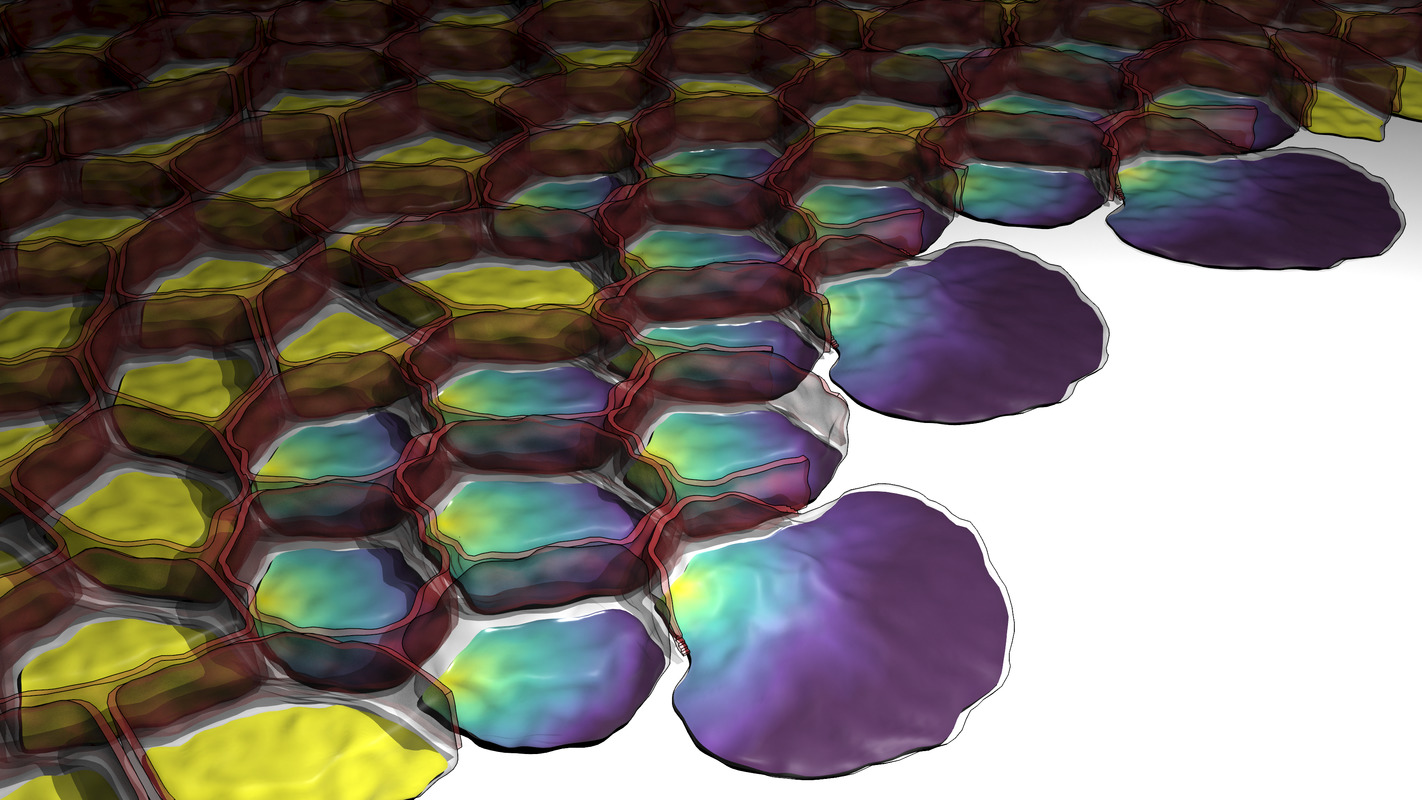Bridging the gap between single-cell migration and collective dynamics
Florian Thüroff*, Andriy Goychuk*, Matthias Reiter, Erwin Frey
 In recent years, a large number of experimental studies has been published, addressing the emergence of single and collective cell migration in a large variety of different setups and for a number of different cell types. With this solid body of experimental data as a basis, we aim to develop a comprehensive mechanistic picture that captures the emergence of collective phenomena as a function of single cellular traits. In particular, we aim to reconcile the two limiting cases of single-cell motility and tissue dynamics.
In recent years, a large number of experimental studies has been published, addressing the emergence of single and collective cell migration in a large variety of different setups and for a number of different cell types. With this solid body of experimental data as a basis, we aim to develop a comprehensive mechanistic picture that captures the emergence of collective phenomena as a function of single cellular traits. In particular, we aim to reconcile the two limiting cases of single-cell motility and tissue dynamics.
Here, we present a computational model for the (collective) dynamics of motile cells, which is specifically designed to bridge the gap between microscopic and macroscopic modeling paradigms. Unlike typical macroscopic modeling approaches, our model explicitly incorporates the most pertinent properties at the level of single cells, including a spatially resolved description of cytoskeletal structures, and takes into account the cell's ability to respond to external stimuli by active cytoskeletal remodeling. In contrast to computationally very expensive microscopic approaches, our simulation algorithm is entirely rule-based and, therefore, efficient enough to allow for tissue-level simulations. As demonstrated in the Results section of this work, our computational model is consistent with a large body of experimental evidence spanning the range from the macroscopic level of extended cellular tissues, via the mesoscopic level of smaller cell groups, down to the microscopic level of single cells.
First, we establish a connection between cell polarity and cell motility by studying the persistent random walks of single motile cells: highly polarizable cells typically move faster and have a longer persistence time of directed migration. In addition, we also find that both increased cell speed and persistence correlate with elongated cell shapes. Then, we demonstrate that the strength of cytoskeletal forces relative to cell contractility is a critical determinant controlling the robustness of collective cell rotations on circular micropatterns. Finally, we assess the collective migration patterns in extended tissues of several thousand adherent cells in a typical wound healing assay. We find that the interplay between (1) monolayer expansion through cell motility and mechanical pressure and (2) cell-density-dependent cell growth and division leads to recurring traction force and velocity patterns.
These results extend the current understanding of the emergence of collective cell migration on flat 2D surfaces. Moreover, our numerical approach provides a highly flexible means of studying the migratory behavior of cells in a large variety of different contexts, ranging from questions centered around the motility of single cells up to the collective dynamics of tens of thousands of cells in extended tissues. In particular, our algorithm explicitly incorporates the most pertinent high-level functionality of single cells, is easily applicable to a wide range of experimental setups, and thus provides a versatile tool for future research in the field.

